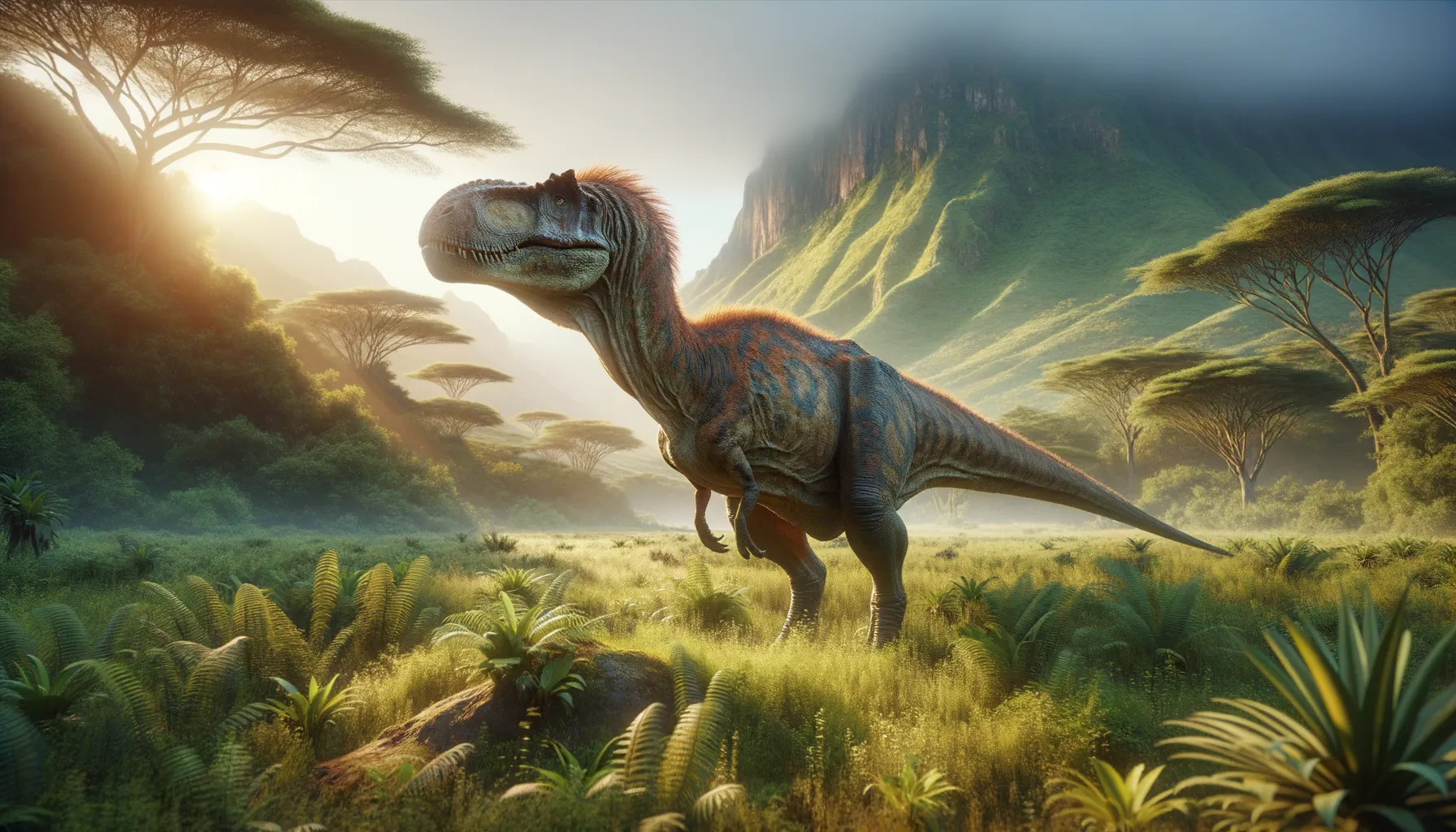
Tawasaurus
Unlocking the mysteries of ancient Africa.
Period
Cretaceous
Length
Roughly 8 meters long.
Height
Approximately 3 meters tall.
Weight
Around 3-4 tons.
Tawasaurus was a mid-sized herbivorous dinosaur known for its robust build and pack behavior. Preferring lush, vegetated areas, it roamed the forests and plains of prehistoric Africa. This dinosaur played a crucial role in its ecosystem as a primary consumer, which impacted the vegetation landscape and provided prey opportunities for larger carnivores. Its social lifestyle suggests complex communication and behavior patterns among members.
Diet
Tawasaurus was herbivorous, primarily consuming a variety of ferns and low-lying plants. Its beak-like mouth was adapted for clipping vegetation efficiently, allowing it to feed on dense underbrush and grasses.
Hunting
Being a herbivore, Tawasaurus did not hunt other animals. Instead, it foraged for tender leaves and plant material, using its senses and social groups to locate food.
Environmental challenges
Tawasaurus faced challenges such as fluctuating climate conditions that affected plant availability. Predation by larger carnivores was another significant threat, shaping its defensive and social behaviors. Changes in plant diversity also impacted its dietary habits, requiring adaptability to sustain its large size.
Speed
Moderate runner for its size.
Lifespan
Estimated around 20-30 years.
First discovery
First discovered in the late 20th century.
Fun Facts
- Tawasaurus was a herbivore, enjoying a diet of lush plants during its time on Earth.
- It roamed what is now known as Africa around 130 million years ago during the early Cretaceous period.
- Tawasaurus had a long neck which helped it reach for leaves in tall trees.
- Despite its enormous size, Tawasaurus likely moved in herds for protection and social interaction.
- Fossil findings suggest Tawasaurus had distinctive spiky back plates that may have been used for display or defense.
- The name 'Tawasaurus' means 'Tawa lizard', with 'Tawa' referring to a legendary spirit from local folklore.
- Children love learning about Tawasaurus because of its gentle giant nature and fascinating lifestyle.
Growth and Development
Tawasaurus hatched from eggs and was likely nurtured within groups for protection. As juveniles, they grew rapidly, increasing their size significantly during the first few years. This rapid growth was crucial for surviving predation, allowing them to eventually integrate into adult groups.
Habitat
Tawasaurus thrived in regions that offered abundant vegetation, such as forests and open plains. These areas provided both food and cover from predators. The dinosaur preferred environments with seasonal variation, promoting diverse plant growth throughout the year.
Interaction with other species
Tawasaurus shared its habitat with a range of other dinosaur species, including both herbivores and carnivores. It often coordinated defenses against predators in groups. Their foraging impacted the distribution of plant species, indirectly shaping the habitat of other herbivores.
Natural lifespan
Tawasaurus typically lived around 20-30 years in the wild.
Reproduction
Tawasaurus reproduced by laying eggs in nests, likely located in secluded areas. Parental care was probable, with adults protecting eggs and young after hatching. This nurturing ensured that hatchlings had better survival chances against predators.
Social behaviour
Tawasaurus displayed complex social behaviors, living in groups for protection and cooperation. These group dynamics helped in identifying food and defending against predators. The dinosaurs communicated through vocalizations and body language to maintain group cohesion.
Fossil locations
Fossils of Tawasaurus have been primarily discovered in parts of modern-day Africa, indicating its adaptation to a range of Cretaceous ecosystems. These discoveries have provided insights into its habits and interactions with its environment.
